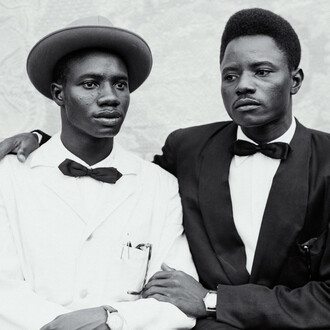Danziger Gallery is pleased to open our fall season with the first American solo show of photographs by Christopher Anderson. Born in Canada in 1970, Anderson grew up in the West Texas town of Abilene before roaming the world and finally settling in Barcelona. He first gained recognition for his photography in 1999 when his images of the rescue of Haitian boat refugees won him the Robert Capa Gold Medal. One of the founders of the photography agency VII, in 2005 he joined the renowned Magnum collective where he has proved to be one of its bright stars.
Anderson’s photographs of metropolitan men and women on the streets of Shanghai and Shenzhen, China taken over the last two years picture a world that is largely unknown to most Westerners. Shenzhen, China’s Silicon Valley, barely existed thirty years ago but today has some twenty million inhabitants. Shanghai, China’s biggest city, has a population of over 24 million. Between the smog and constant development a grey/blue light hangs over both these cities providing an almost surreal or theatrical illumination to Anderson’s portraits. Whatever our preconceptions, Anderson presents an up to date image of the reality that is modern urban China.
Working almost invisibly, and focusing in on tight close-ups that exclude all context except the unusual light on the faces of his subjects, what first struck Anderson was that people around the world have begun to look and act the same. Yet in the face of this observation he felt compelled to wonder "Who are these individual people? What do they dream about? What truth do these pictures convey?”
Mysterious, sensual, and visceral, Anderson’s China pictures are a noteworthy addition to the photographic tradition of Walker Evans and Harry Callahan that captures people unaware of being photographed while seeking a psychological truth in the faces and expressions of its subjects. Like Walker Evans, Anderson’s pictures were taken when “the guard is down and the mask is off”. Yet Anderson’s photographs could not have been made without the recent technological developments of digital cameras and lenses that allowed him to not only make color pictures in the ambient night light (when most of them were taken) but also to record the subtlest details and shades of color.
As with his notable predecessors, Anderson’s exploration of the human condition takes place within a rigid conceptual framework, separating his subjects from their background and focusing on their faces and expressions. As Sarah Greenough observed writing about Harry Callahan’s “Women Lost in Thought” series: “His refusal to project any kind of narrative or literary interpretation, his respect for his subjects, and his recognition of their need for privacy and reflection in a crowded city also elicits a sense of empathy and kinship. He was at once removed and detached, a dispassionate observer of this modern spectacle, and also one of them."
In a medium that is so often a complicit one, there is a both a beauty and a shock to seeing people's outer details so nakedly exposed. Anderson’s photographs record the surface while posing unanswered questions about his subjects’ inner lives.
















